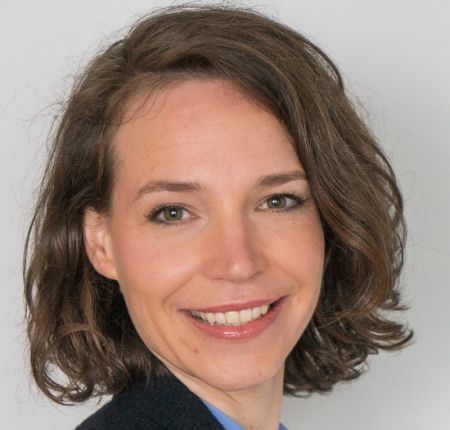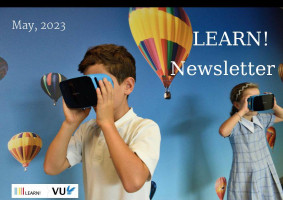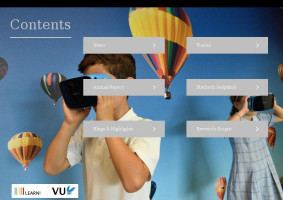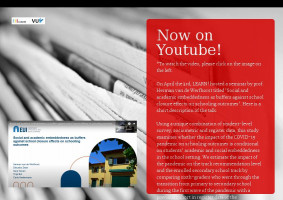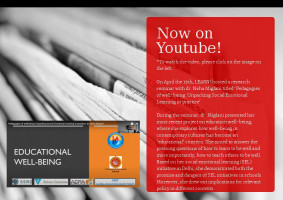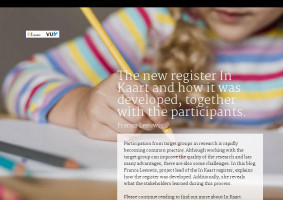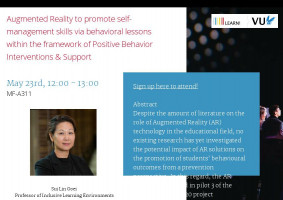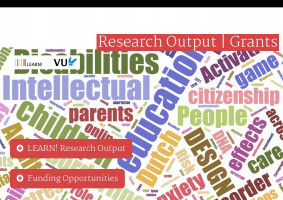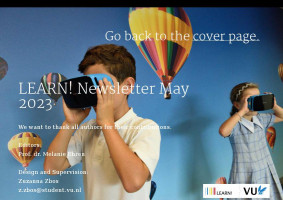Participation from target groups in research is rapidly becoming common practice. Although working with the target group can improve the quality of the research and has many advantages, there are also some challenges. In this blog Franca Leeuwis, project lead of the In Kaart register, explains how the register was developed. Additionally, she reveals what the stakeholders learned during this process.
Please continue reading to find out more about In Kaart.
In Kaart (www.inkaart.org) is a new register for children and adults with (suspected) ADHD, autism, DCD, dyslexia, an intellectual disability or a visual disability. Except for people with visual disability, this group is increasingly named as ‘neurodivergent’ or ‘diverse in development’, with possible disabilities or talents being determined in interaction with the broader environment. Parents can report about their children if they notice that their child is developing differently from other children. These broad inclusion criteria reflect the goals of the register. We want to gain a better understanding of functioning and life trajectories of neurodivergent people and people with visual disability. By including different groups, we will be able to study similarities but also get a clearer view on how these issues are distinct. Our set up additionally provides databases for subgroups to be studied, so if a researcher is interested in, for instance, young children with an intellectual disability and ADHD, they can submit a data request to the In Kaart steering group and if granted, work with this data. Our first data request will be handled soon and addresses the positive aspects of ADHD and other developmental issues.

For us, it was pivotal to work together with the people we want to include in In Kaart in developing the register from the beginning, and we are still actively collaborating with them. Carlo Schuengel initiated the idea for In Kaart and the register is set up from Viveon, the academic collaborative centre of s’ Heeren Loo and VU. Being embedded in structural collaboration between stakeholders made it rather self-evident that this should also be how In Kaart would work. Our steering group consists, next to researchers from different universities and departments, of representatives of our target groups.
The Netherlands Autism Register (NAR, KNOP VU) also was a blueprint for how we set up the In Kaart register. Not only have we learned from and instilled the technical format of the NAR but Sander Begeer (the founder of NAR) has shown us how to work with his target group. Modelling, after all, is a great way to learn. NAR additionally showed us how valuable their participants consider the feedback the NAR sends them. Therefore, we included this feature as well. Participants of In Kaart will receive personalised feedback about their data compared to the group (participants of In Kaart) and compared to themselves over time. They will also receive regular updates about (research) results.
How we developed In Kaart in collaboration with our participants
Participants are represented in our steering group for structural input and collaboration. Additionally, we created groups of participants at the beginning of In Kaart to have in- depth discussions about specific topics and we will work together with them during the rest of the project. Furthermore, we are in constant interaction with participants through lobby-and interest groups. Following are some examples of the information participants shared in these interactions and how that shaped our register. Participants made clear what they struggled with most so we could make sure these domains were covered in our questionnaires and will continue to be in the future. They explained how each developmental issue comes with its own set of difficulties so we made sure to address specific questions for each group in our register. We joined in discussions about language around disorders/problems/diversity and how this can differ between people but also within people over time, depending on a complex set of variables, so we can understand why not everybody is on board with one term for the whole group. We are currently still debating our terminology, which also fuels our way of thinking about disorders and developmental issues. They gave us clear feedback on our website, questionnaires and also raised important issues concerning accessibility.
Participants expressed how they appreciated talking about these subjects in a group of people who could literally relate. Daan Slagman, a member of our steering groups puts it as follows;
‘It is very valuable to me to participate, as a person with DCD, to the In Kaart steering group. In Kaart is meant to be a register for both participants and researchers and I find it important to voice the opinions and experiences of the participants. It is fulfilling to see that I am giving valuable input and my opinion matters, especially for the adult participants that I, amongst others, represent.’
Parents in Balance (Ouders in Evenwicht)
In Kaart strives not only to focus on the individual with the developmental issues, but to understand development and caregiving within context. Therefore the Parents in Balance-project was a very fitting first project to be facilitated through In Kaart. Parents in Balance was itself initiated by parents with long-term care needs, in close alignment with the core values of In Kaart. Parents in Balance focusses on burnout-related thoughts and feelings and resilience. The project is rather unique in that the PhD-candidate, Nathalie Patty, works in a team with the project lead, Karen van Meeteren, who is expert-by-experience as a parent of a child with cerebral palsy.
Things we learned
Working with our participants is one of the great joys of my work. As with all things that you put effort in, it takes time. When starting a project that includes working with your target group we would highly recommend to reserve generous amounts of time. Some other things we learned and found useful were; make the relationship with these new colleagues reciprocal. Of course, you need to pay them in some way (there is a lot of debate about this, see for instance (doi: 10.17294/2330-0698.1975). Also, when your target group gives feedback, make clear how this feedback was handled. As with all input you get from colleagues, not everything can be used. Give information on why decisions are made. Finally, we would recommend not only asking your target group for input on certain aspects of the project, but also have people structurally be part of groups where decisions are made. That way, they can choose themselves when their input is valuable and relevant and they are involved in all aspects of the project.
To conclude
Working with our target group has shaped our register and our way of thinking. As researchers we do our best to study situations and people as objectively as possible, however in many cases the topics we study can be personal and hit close to home. Working with the target group could therefore be an opportunity to learn more about how we relate to our research and how this research relates to us. For me personally, as a mother of a child with developmental issues, this has been very valuable.
Are you interested in joining In Kaart as a participant and filling out your first online questionnaire? Welcome at: In Kaart: formulieren
Questions about the data, working together on research or otherwise? Please contact In Kaart through Franca: f.h.leeuwis@vu.nl
Franca Leeuwis
Franca Leeuwis is project lead of In Kaart (FGB; section Clinical Child and Family Studies & Viveon). She has broad experience in leading large database projects. In her work she focuses on building trust within teams and reliable processes, in order to provide a solid foundation from which impactful collaborations and research can evolve. Franca is highly motivated to contribute to a more open minded and kind environment where we can all, including people with a diverse development, thrive. She temporarily lives in and works from Helsinki with her husband and two kids. They enjoy the good things that Finland has to offer; nature, education, snow, and sauna.
